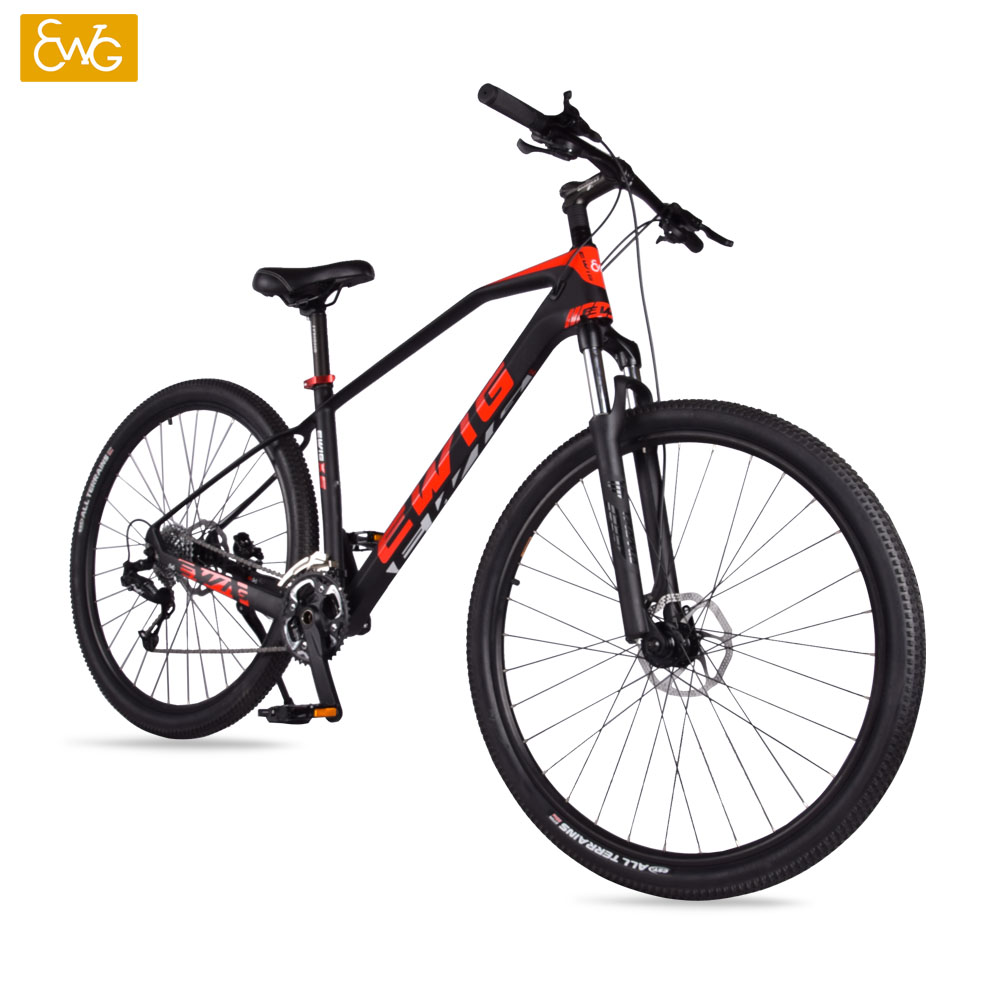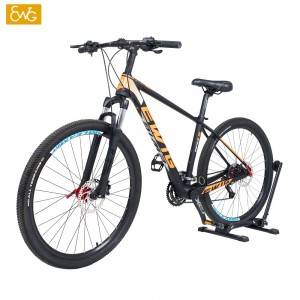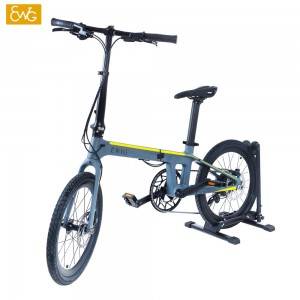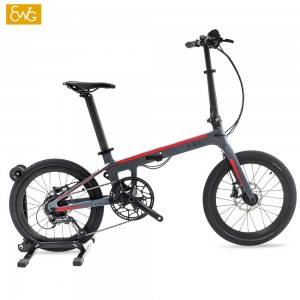This can be regarded as a commonplace question. Next, let’s compare "entry carbon" and "top aluminum" in several aspects.
1.Rigidity:
Carbon fiber products are characterized by low specific gravity (density), high specific strength (strength per unit weight), and high specific modulus (modulus per unit weight). Simply , if carbon fiber has the same weight as aluminum alloy products, the strength of carbon fiber will be much higher than aluminum alloy. Some data of T700 Toray carbon fiber commonly used to make bicycle carbon fiber frames: the modulus of elasticity is about 210000Mpa.
At room temperature, the modulus of elasticity of 6-series aluminum alloy for common bicycle frames is about 72GPa=72000Mpa. Elastic modulus is often a parameter to measure rigidity. From the data, it can be seen that the rigidity of carbon fiber is about three times stronger than that of 6-series aluminum alloy. This is determined by the material itself, not related to top-level and entry-level things.
2.Fatigue resistance:
The fatigue resistance of the aluminum alloy frame road bike is relatively poor, that is, the strength of the frame will deteriorate after long use. The fatigue resistance of carbon fiber is relatively excellent, and the advancement of prosthetics also benefits from this.
3. Appearance:
The joint part of aluminum alloy material usually leaves traces due to welding, which is more rigid in terms of shape shaping. Carbon fiber products are made of carbon fiber cloth and resin formed in a mold, which can be molded into various shapes without welding marks.
4. weight:
The weight of the entry-level carbon fiber and the top aluminum alloy frame bike will not differ too much, which is considered equal. The entry-level carbon fiber of the road bike, such as the EWIG bare frame, is about 1200g. I know the Trek ALR top aluminum alloy. It should also be about 1100g. Under the premise of ensuring rigidity, the entry-level carbon fiber frame is a bit heavier, but the difference is not very big.
5. Durability:
Some people say that carbon fiber has a life span of only 3 years and 4 years, and aluminum alloy can be used for more than ten years. Others say that carbon fiber is formed once, as long as it hits one point, it will be scrapped. Aluminum alloy is different... I want to say aluminum alloy. What's the difference? The local stretch ability of aluminum alloy sheet is not good. If there is an impact to form a dent, it will greatly affect the rigidity and strength. Even if the repair is mandatory, the original rigidity and strength will not be restored. The repair process is prone to sudden changes and cracks, and then it will really be completely scrapped. And aluminum has a low melting point. Unlike steel, welding is just fine. Of course, it's not impossible to weld. It's just too troublesome, right. As for carbon fiber, there are small local breaks. If you don't mind, you can find a professional repairer, and you can also repair the paint surface. The repair is complete, let's increase the weight, and in terms of strength, if it is repaired properly, it will increase. I used to have a carbon mountain bike frame. The chain stay was broken. I repaired it by myself. I went down a few flights of stairs without any problems。
6. Comfort:
To be honest, this is very important. The aluminum frame bike is really bumpy on some roads where the road conditions are not so good. I remember that once my hands were shaking and I couldn't hold them tightly. In contrast, the cushioning of the carbon frame is really comfortable.Carbon frame and aluminum alloy are not originally the same level of material, so I would say that comparing the qualified "entry carbon fiber frame" to the "top aluminum alloy frame", I believe that bicycle factories can't break the physical limit. So my personal understanding is that "top aluminum alloy" and "entry carbon fiber frame" are like the difference between the first place in the poor student class and the last place in Massachusetts and Harvard.
Let me say more, lest I am not objective enough or rigorous enough:
Generally, the low-end carbon bike frame, the carbon fiber produced by most small domestic factories is affected by many factors, such as: geometry, workmanship, materials, etc., while the high-end aluminum alloy frame manufacturers generally have their own unique pipe extraction technology. There are various scientific geometric designs and so on. Therefore, the low-end carbon in my full text above is also based on the low-end carbon of well-known manufacturers, not the carbon of small workshops. Therefore, the qualified low-end carbon is compared with the high-end aluminum, and I still vote for the low-end carbon. If you compare the mid-range carbon and high-end aluminum of major manufacturers, I think there is no problem with rolling.
So how to choose is up to you!

Learn more about Ewig products
Post time: Jul-15-2021



